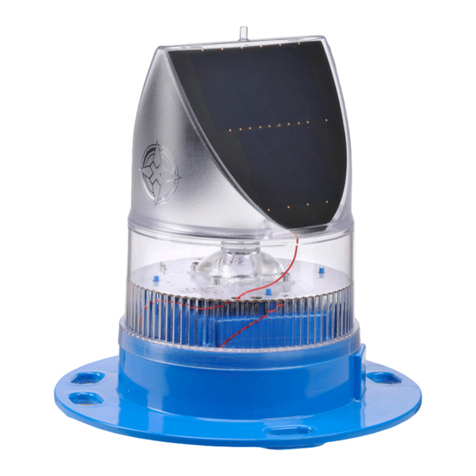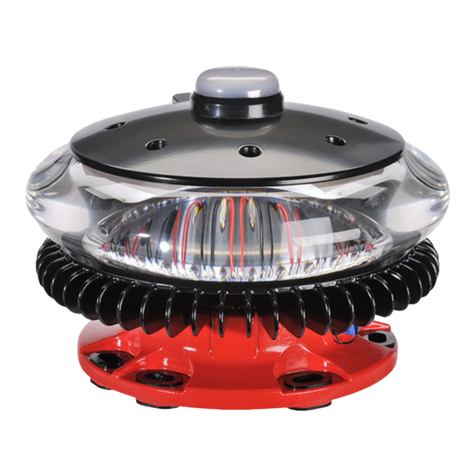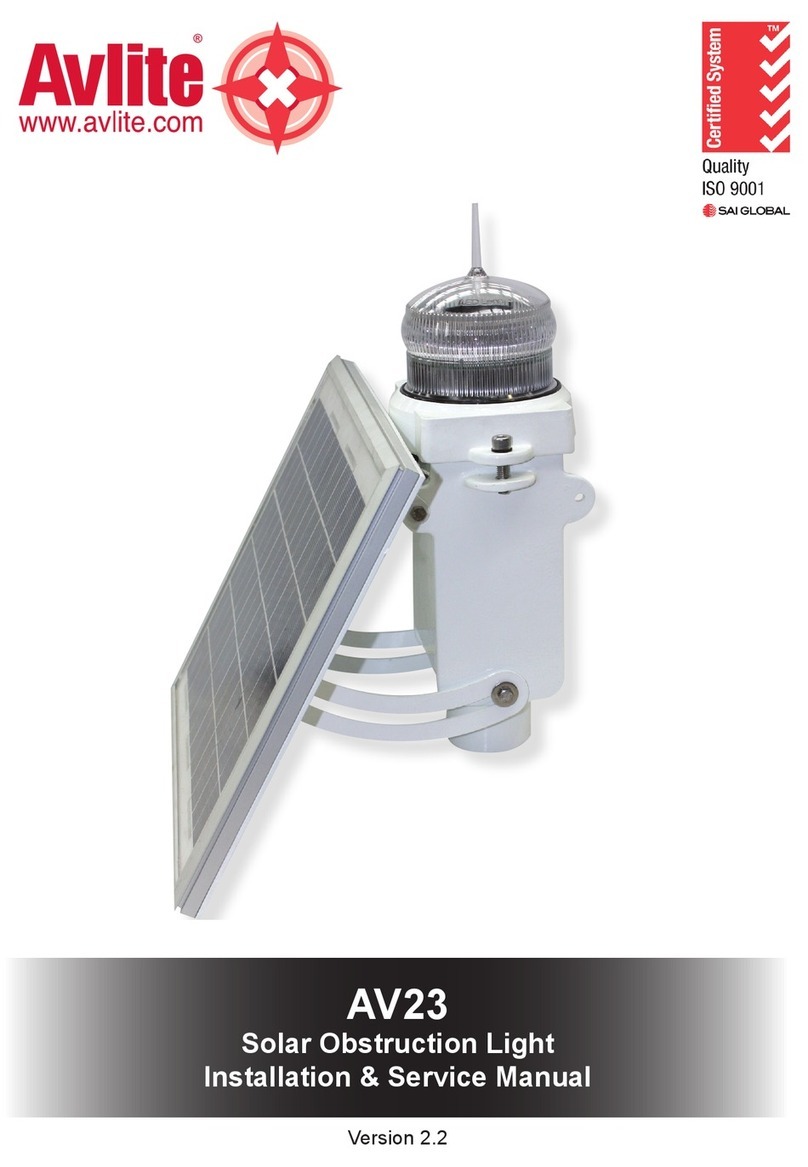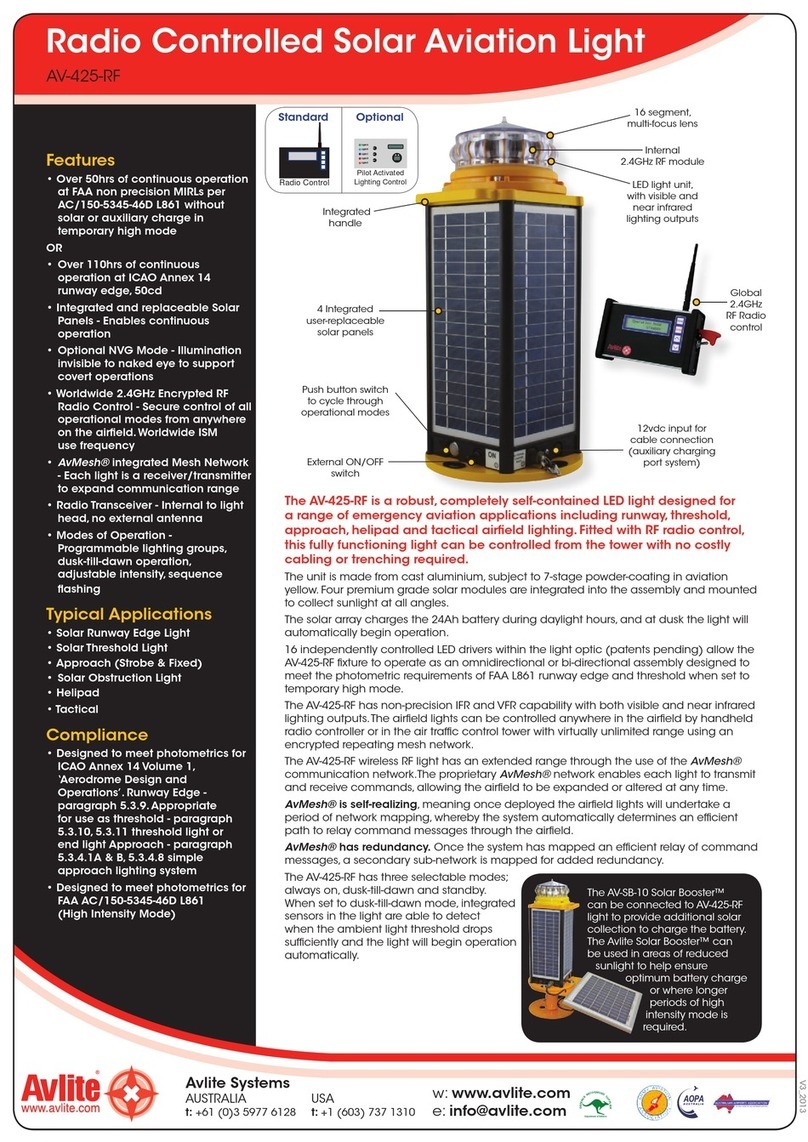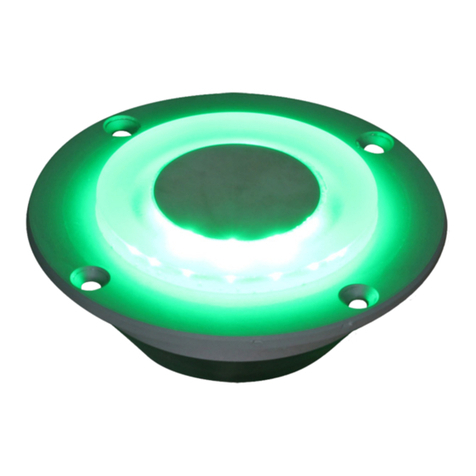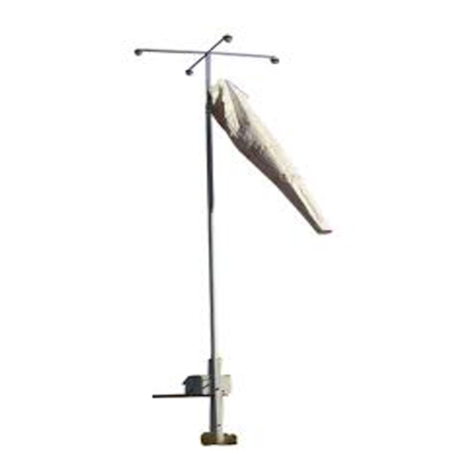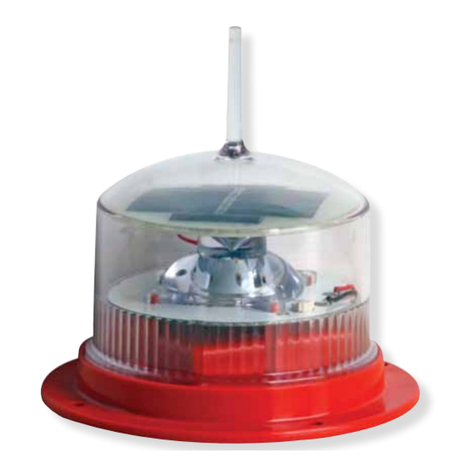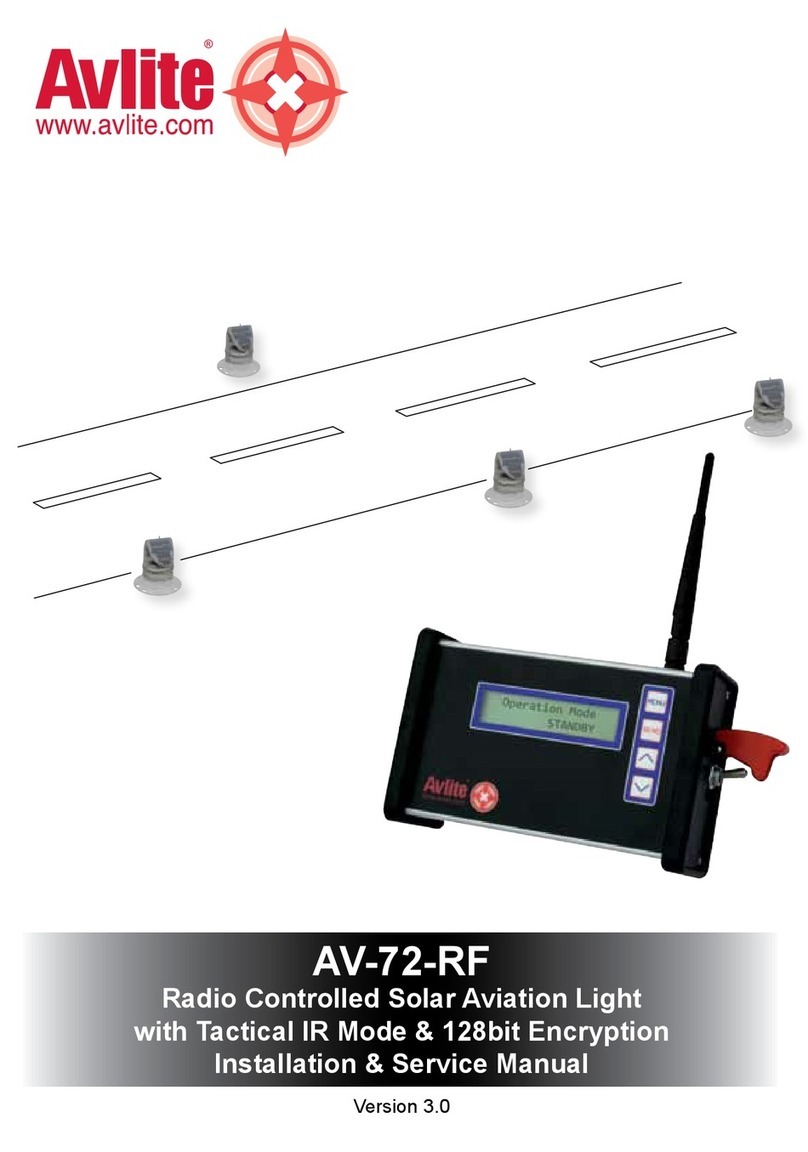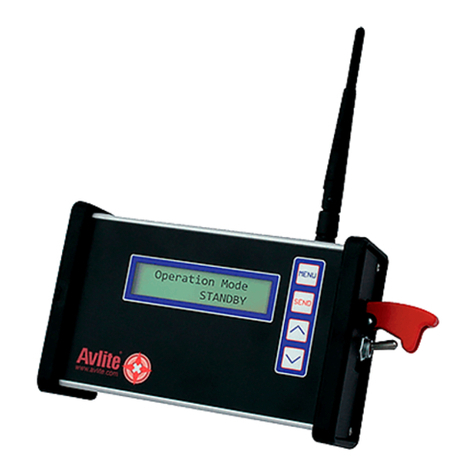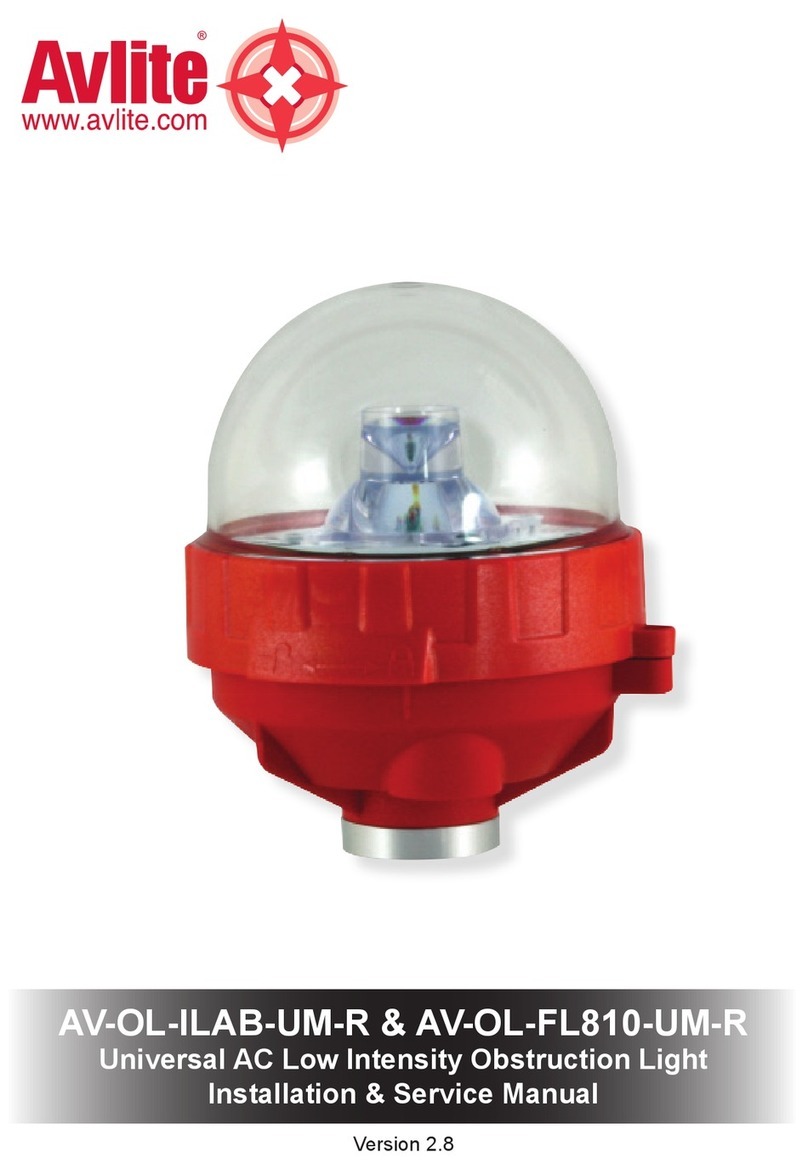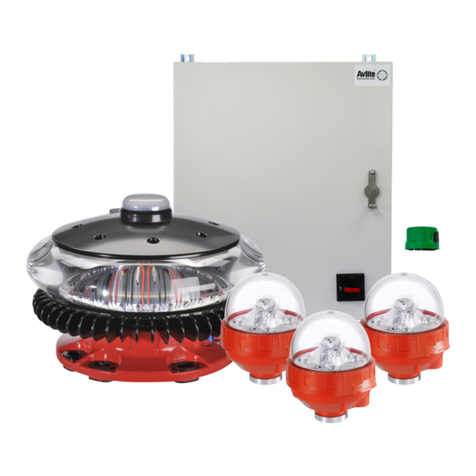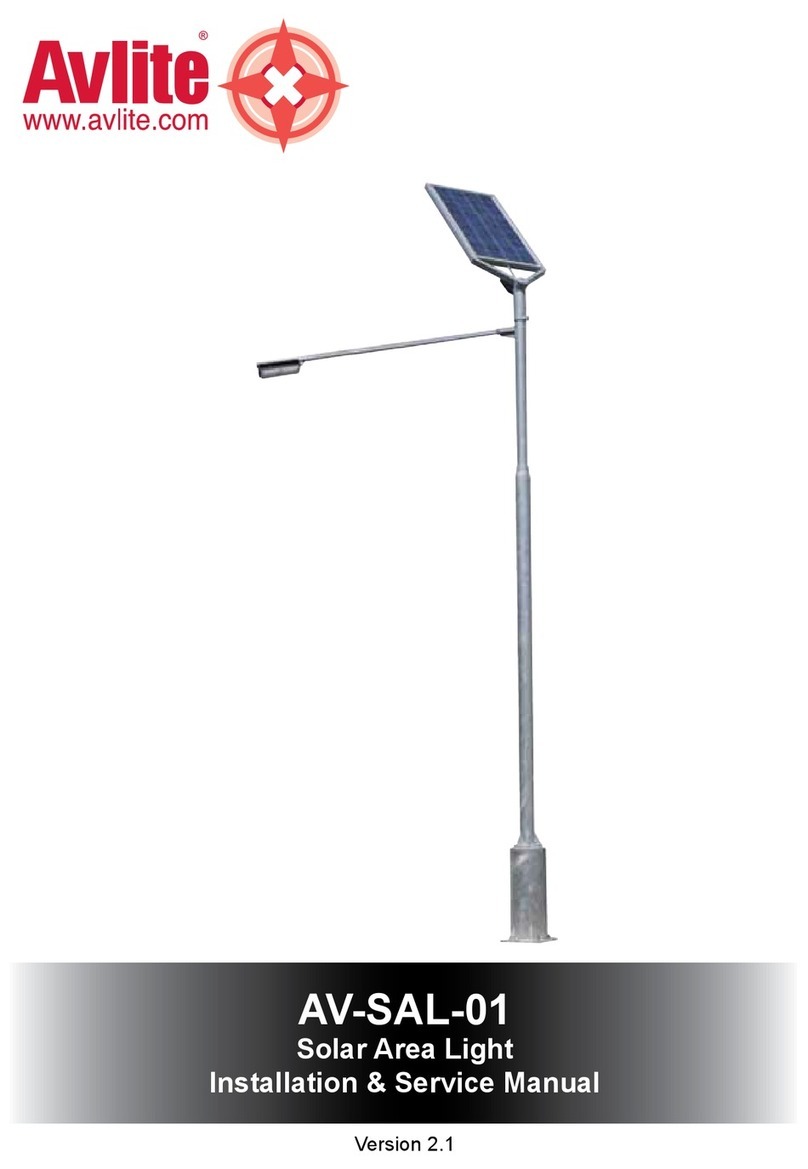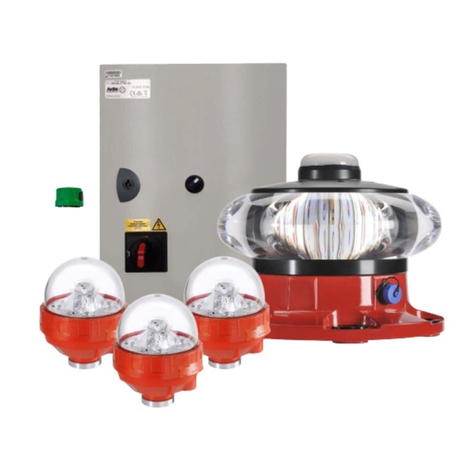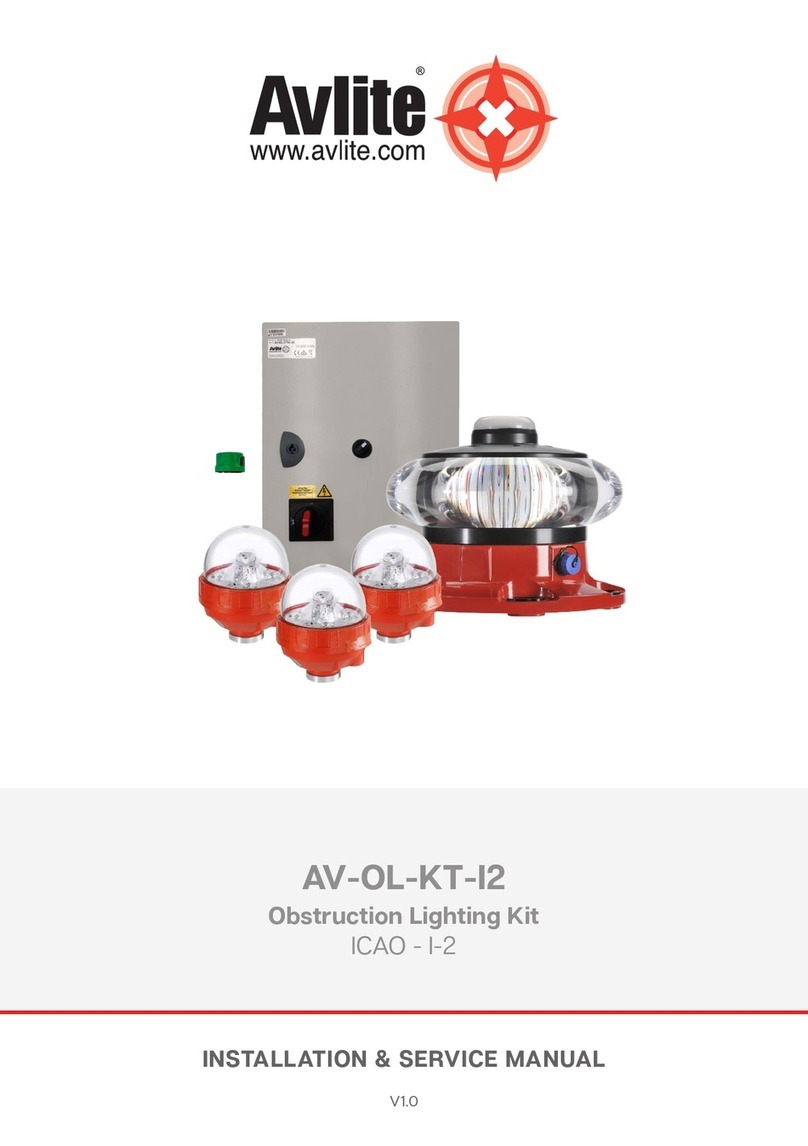
10 Single Low Intensity Obstruction Light
AV-OL-LI
6.0 Operation and Setup
When powered up, the light will constantly check day/night status using its internal ambient light sensor. The ambient
light sensor averages its measurement for 30 seconds.
FAA: By default the lights turn ON when the ambient light decreases to not less than 35 footcandles (376.7 lux) and
turn OFF when the ambient light decreases to not more than 60 footcandles (645.8 lux).
ICAO: By default the lights turn ON when the ambient light decreases to not less than 100 lux and turn OFF when the
ambient light increases to not more than 150 lux.
In night mode, the LI will be illuminated as either a red, steady burning (ICAO Type A and B and FAA L-810) or ashing
(ICAO Type E and FAA L-810F) xture. In day mode, the xture will not be illuminated.
Light intensity & operation mode setting for FAA compliant light xture
The FAA compliant model comes pre-set to the correct intensity for L-810 steady or L-810(F) ashing burning red
obstruction light in dusk-till-dawn mode. The intensity and operation mode is pre-set in the factory and does not need
to be set by the user.
Light intensity & operation mode setting for ICAO compliant light xture
The xture will be supplied with the ICAO compliant optic. The obstruction light will be pre-set to the intensity setting
specied by the customer for a red steady burning (ICAO Type A or ICAO Type B) or ashing (ICAO Type E) Low
Intensity Obstruction Light in dusk-till-dawn mode. The intensity and operation mode is pre-set in the factory and
does not need to be set by the user.
Note: The ICAO Model and FAA Model have their own unique optic. The ICAO model cannot be used for FAA purposes
and the FAA model cannot be used for ICAO purposes. The model required needs to be specied at the time of order.
6.1 GPS Syncronisation
Avlite has utilised the latest advancements in GPS technology to develop an internal synchronisation system that is
incorporated into the lights. Using overhead satellites, multiple LI xtures (ICAO Type E and FAA L-810F only) are able
to synchronise with other obstruction lights set to the same ash pattern. No additional power supplies, aerials or
control systems are required, and with its microprocessor- based system, the GPS option is specically designed to
provide maximum reliability and performance over a wide range of environmental conditions.
Operating Principle
Each light operates independently and requires no operator intervention. A minimum of 4 satellites need to be in view
for the built-in GPS receiver to collect time data. At dusk, the light sensor will turn the light on. If time data is available,
the LI will come on synchronised to every other obstruction light with the same selected ash code. Synchronisation is
achieved using an internal algorithm based on the highly accurate time base and time data received from the satellites.
The satellite data is provided from a number of earth stations using atomic clocks as the time base. Continuous self-
checking ensures that the lights will continue to run in synchronisation.
Light Activation
At power-up the microprocessor checks that the internal GPS module is programmed correctly and is able to provide
valid time base and time data. Once outside with a clear view of the sky, valid data should become available within 20
minutes.
Note: Lights will not synchronise if dierent ash codes are selected.


